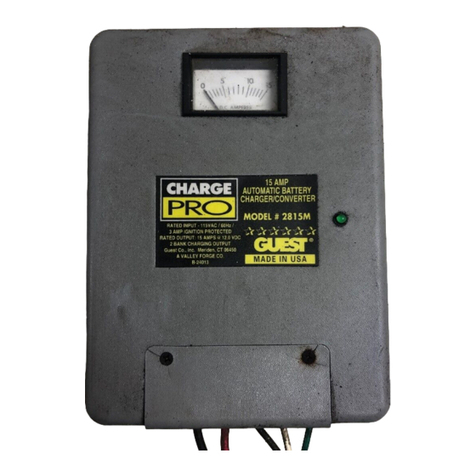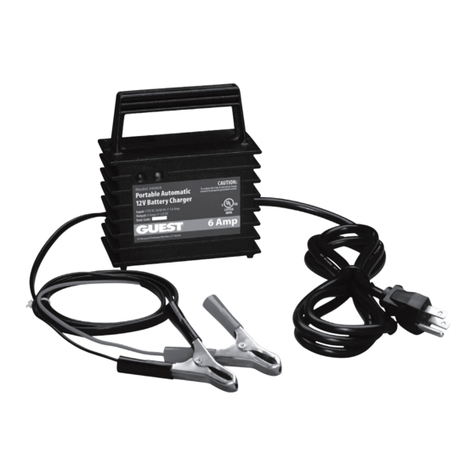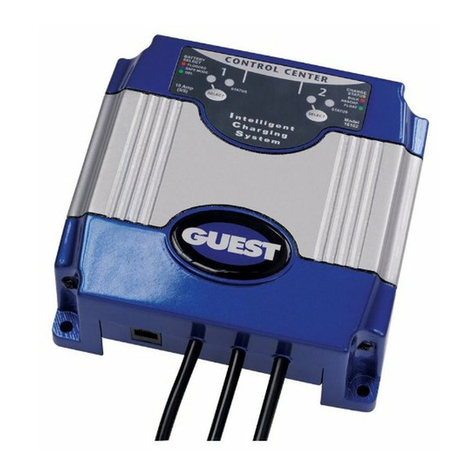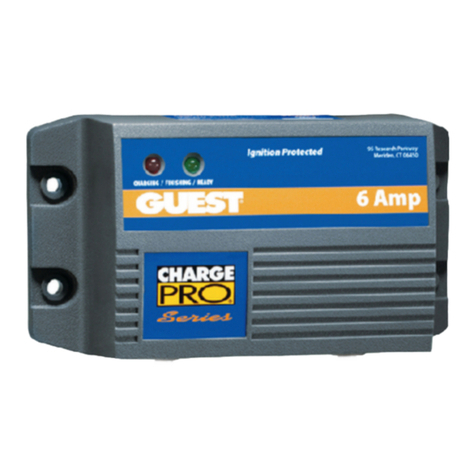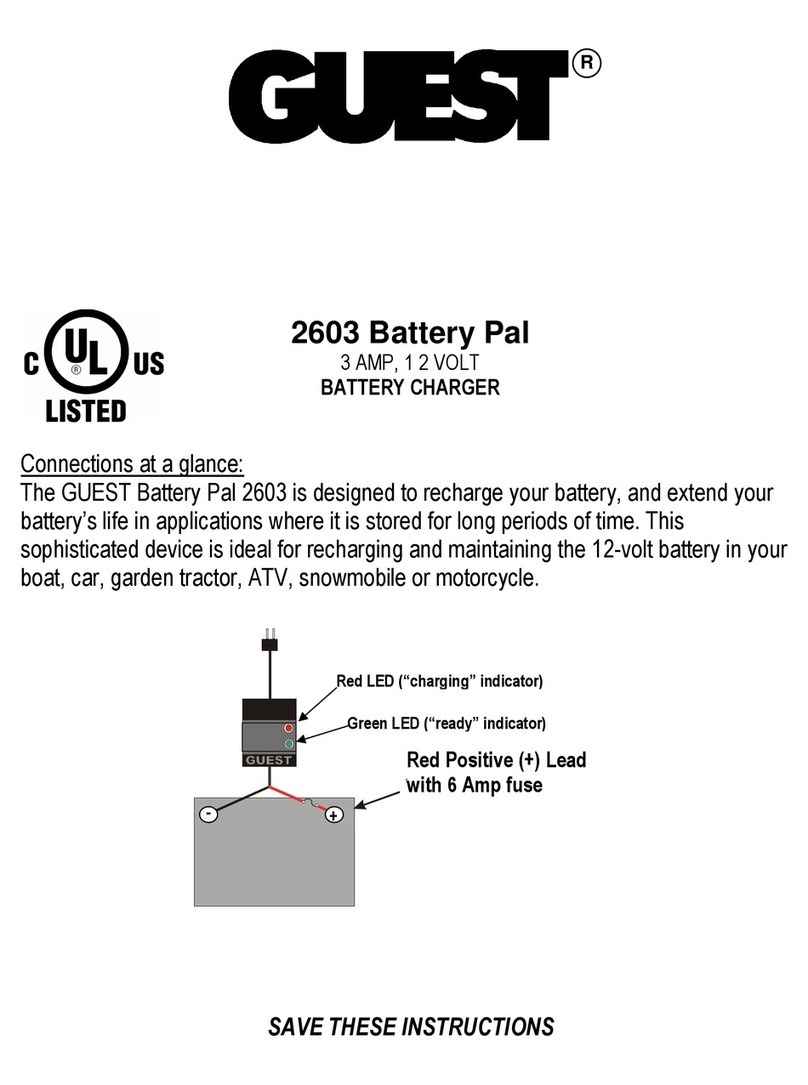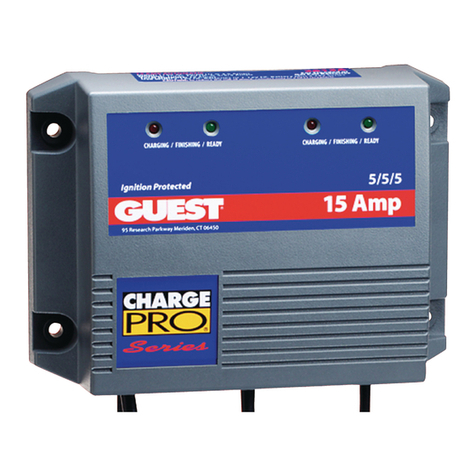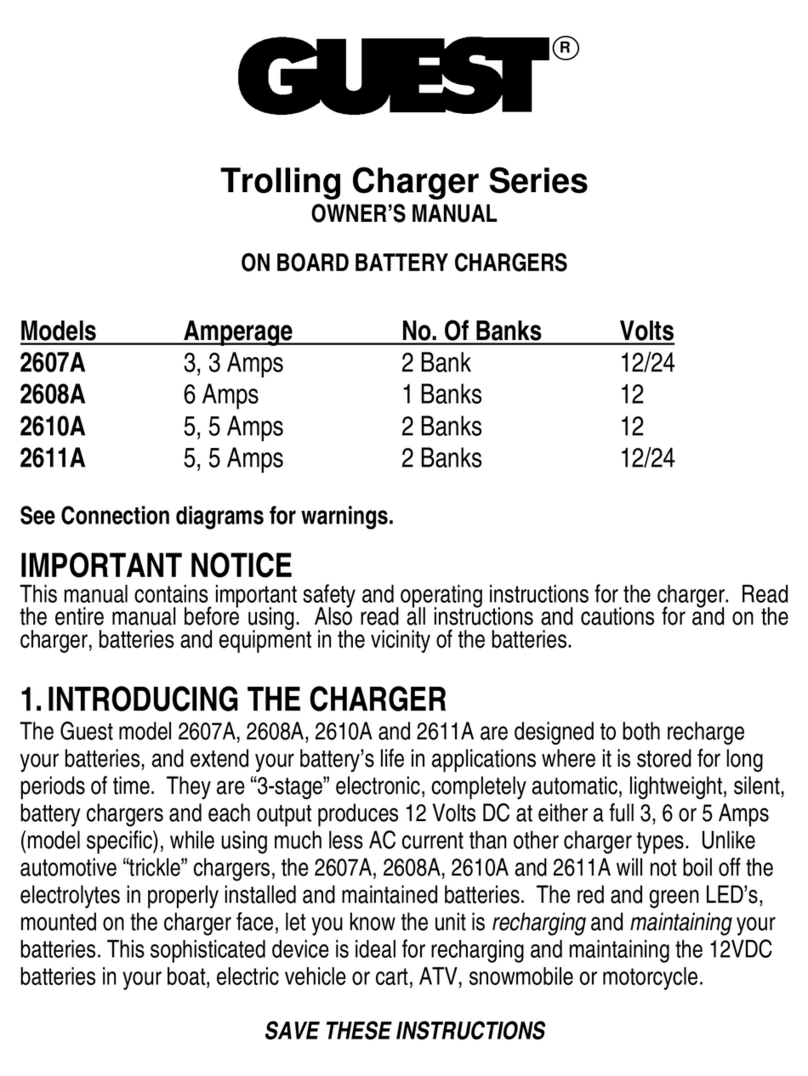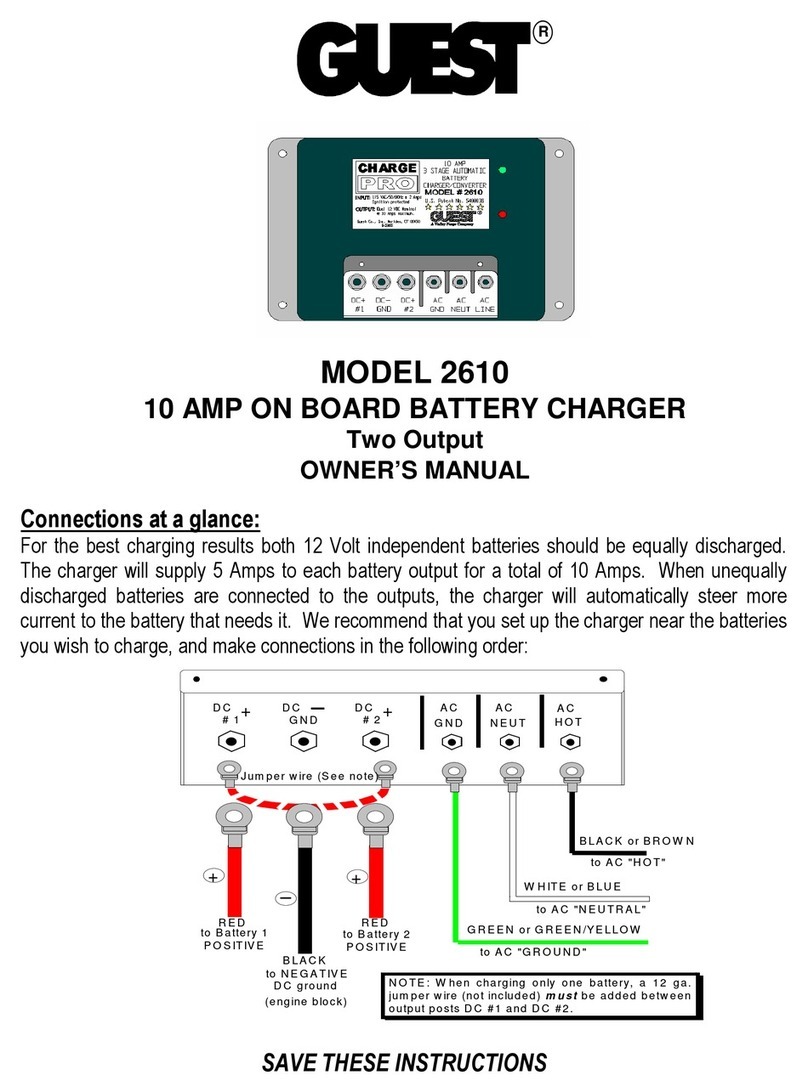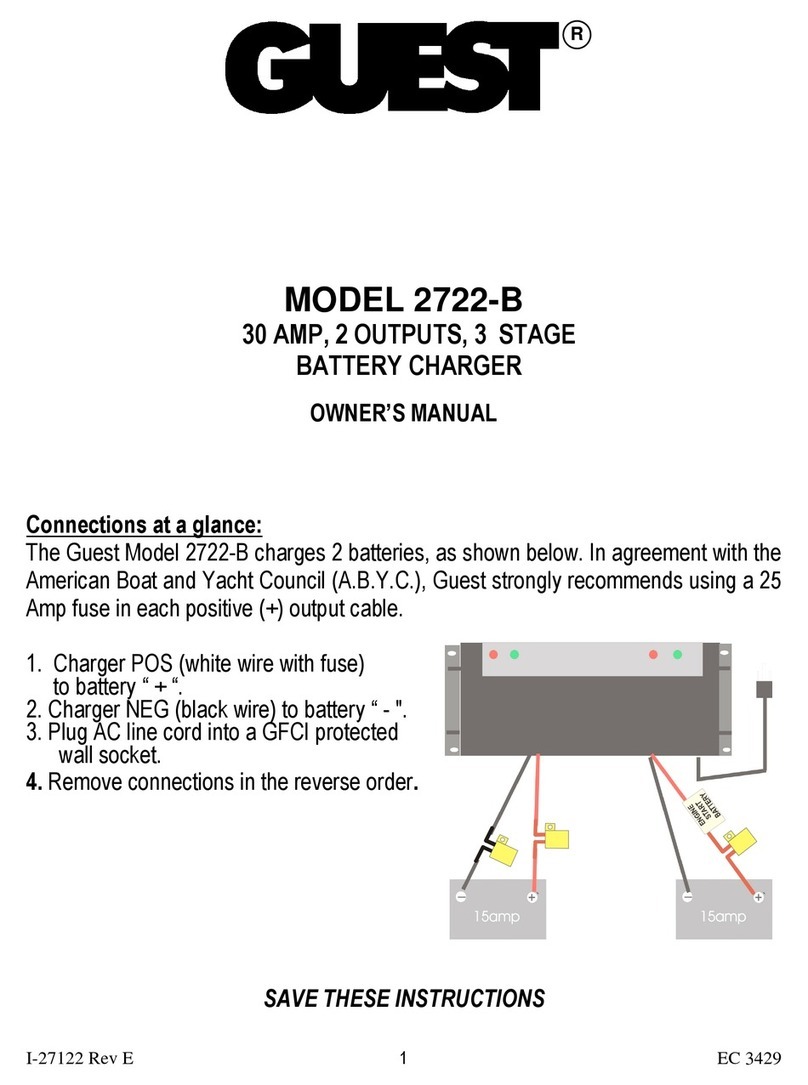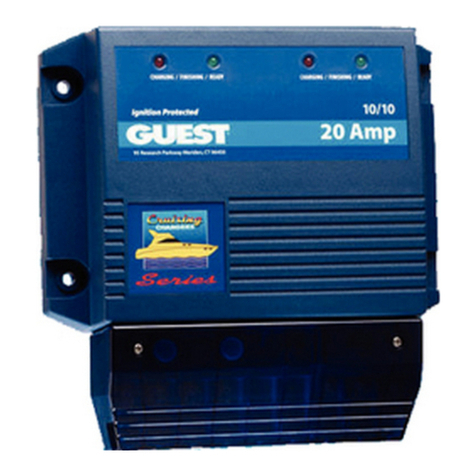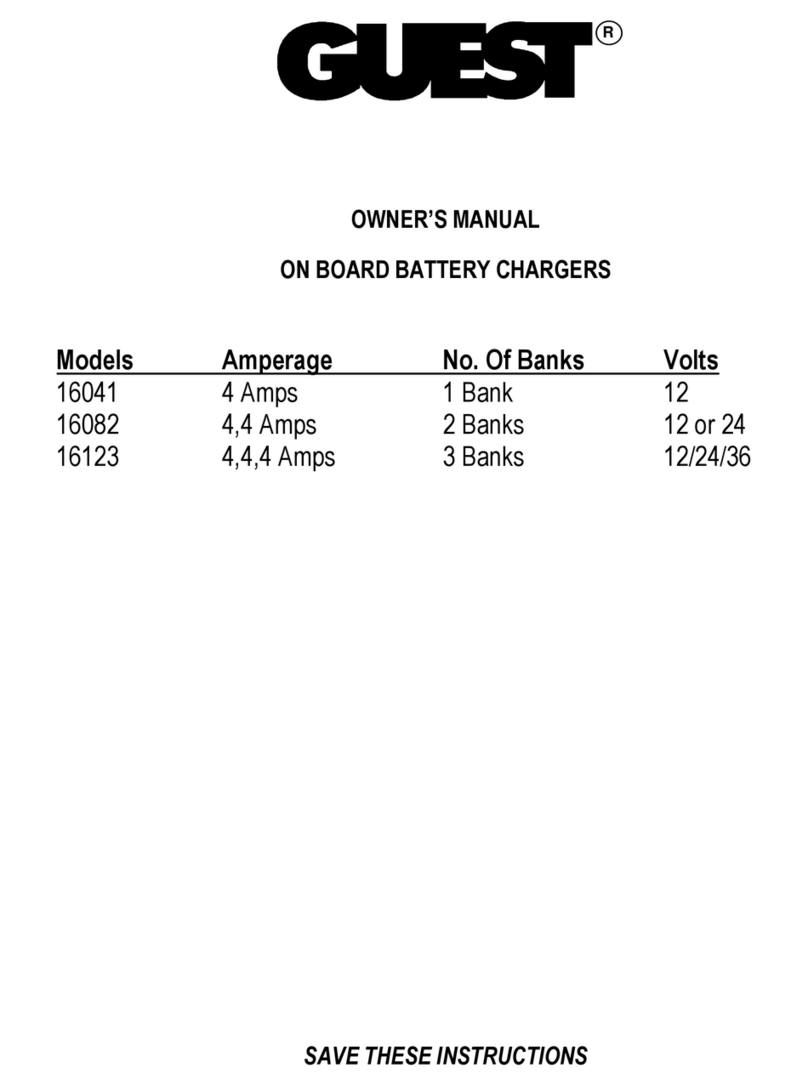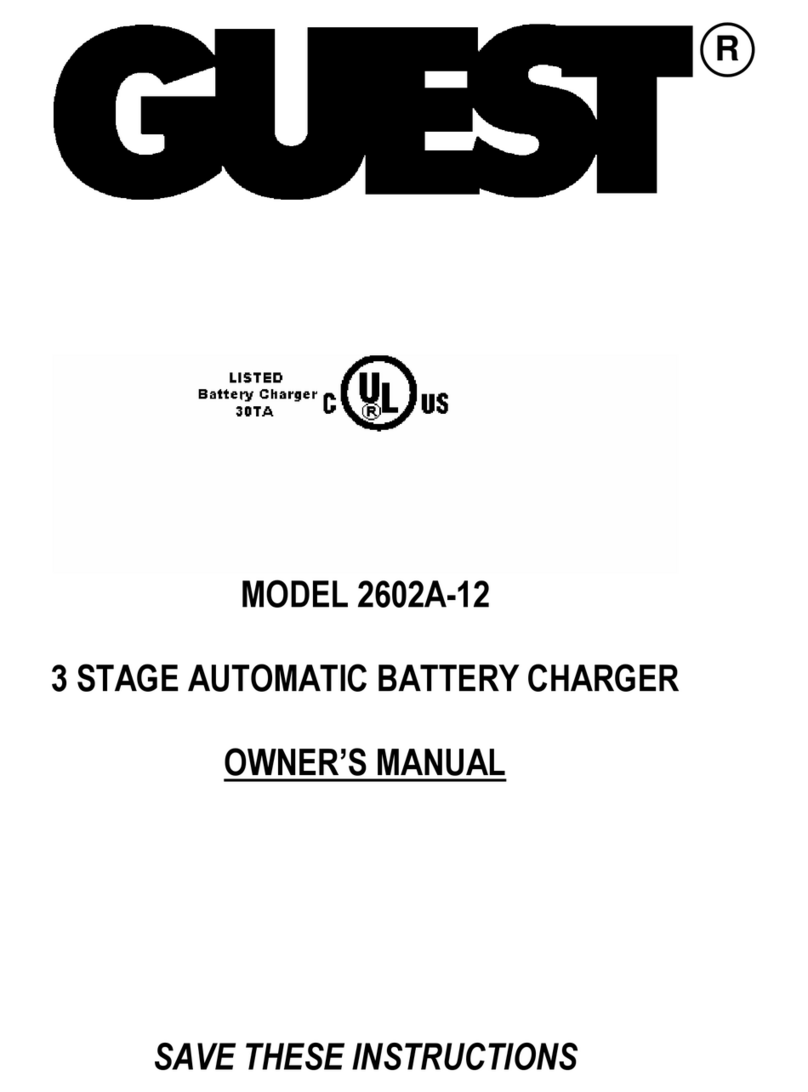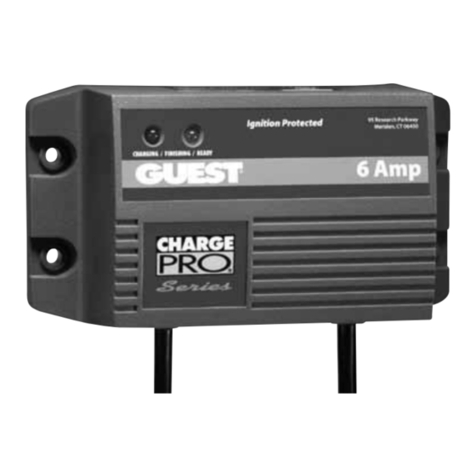3
6. Add distilled water in each cell until battery acid reaches levels specified by the
battery manufacturer, if applicable. Do not overfill. For a battery without cell caps,
carefully follow the manufacturer’s recharging instructions.
7. Never allow the ring terminals to touch each other.
8.
NEVER
charge a frozen battery.
AC Connection and Grounding Precautions
DANGER
DO NOT OPERATE THIS CHARGER WITH A TWO BLADED ADAPTER PLUG OR
EXTENSION CORD. DOING SO CAN RESULT IN SERIOUS PERSONAL INJURY.
AFTER SECURING THE BATTERY CONNECTIONS, PLUG THE AC LINE CORD INTO
AN AVAILABLE AC OUTLET THAT IS PROTECTED BY A GROUND FAULT CIRCUIT
INTERRUPTER (GFCI) BREAKER.
CAUTION:
To reduce the risk of shock, connect only to a properly grounded outlet.
NOTE:
AC Line Cord color coding is EU style. Line = Brown, Neutral = Blue, Ground
= Green
2.INSTALLING THE CHARGER
Choosing Charging Location
The charger should have at least eight inches of unobstructed area on all sides of
the unit for effective cooling. The case of this charger will become warm during
operation. Because the charger is convection cooled (airflow over the back of the
charger), the optimum mounting position for the charger is vertical. Mounting on its
back on a horizontal surface may cause the charger to slightly reduce amperage
output due to the thermal protection built in. Do not install the charger on carpeted,
upholstered, or varnished surfaces.
Mounting the Charger
1. Use corrosion resistant ¼” dia. bolts, backed by a flat washer, and secured to the
mounting surface with a split-ring lock washer.
2. Hold the charger to the mounting surface and mark the holes.
3. Remove the charger and drill the mounting holes.
4. Align the charger and assemble the mounting hardware. Secure.
Making DC Connections
Check polarity of the battery posts. The POSITIVE (POS., P, +) battery post usually
has a larger diameter than the NEGATIVE (NEG., N, -) post. Connect Red charger
output wire to POSITIVE post, Black charger wire to NEGATIVE. See below diagrams
for more details.
Battery Size Recommendations
The recommended maximum battery size per 6 amp bank is 72AH.
